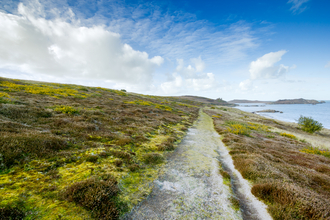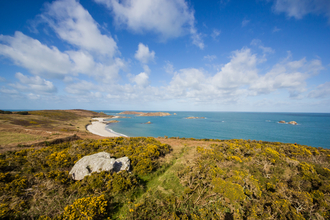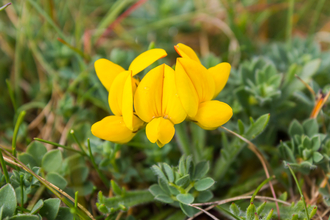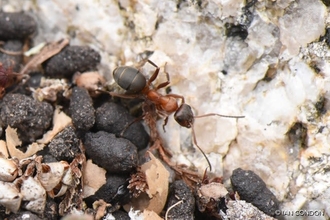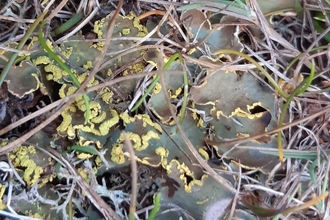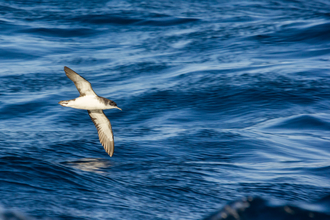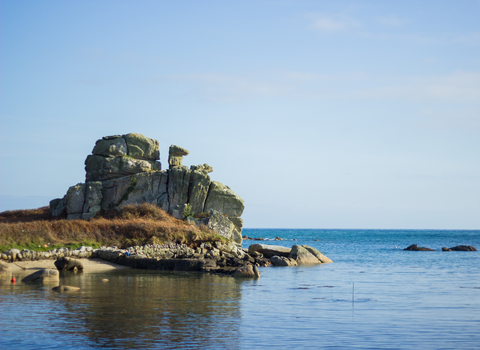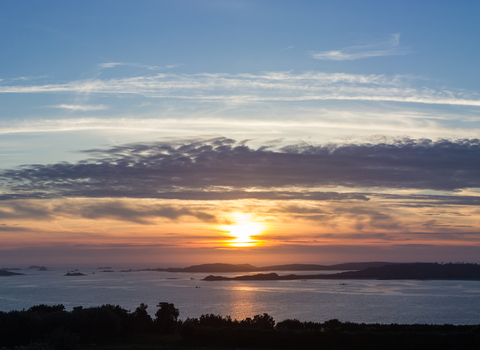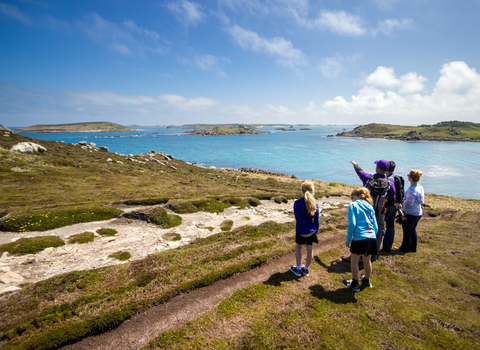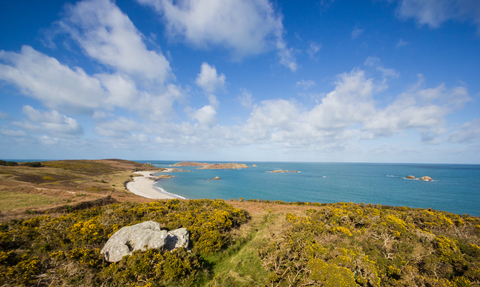
St Martin's
Sweeping bays and dramatic coastlines
St Martin’s is famous for its beautiful white sandy beaches and dappled sunlit landscape, which gives the island its name in Cornish, Brechiek, meaning ‘dappled island.’ The island’s crystal-clear shores present a wide variety of shoreline plants which are important for wading birds, such as sanderlings and plovers, which feed on the sea rocket found there.
Up the northerly winding edge of the coast, the spectacular wreaths of waved heath surround the Daymark, creating an interesting, waved effect in the heather. Scattered across the site are small populations tormentil, heath bedstraw and English stonecrop. This area is particularly important for the nationally rare orange bird’s-foot, too. St Martin’s is also known for its attractive purple bell heather and western gorse, which dominates the high ground on Chapel Down. Towards the wetlands of Coldwind Pit, the semi-aquatic marsh pennywort can be also found.
In the rocky outcrops near St Martin’s head, fulmars can be spotted during their breeding season, often seen flying near Menawethan and in areas around the Daymark, which are both home to successful sub-colonies. They are joined by small populations of Manx shearwater, herring and lesser black-backed gulls.
The island is particularly famous for its colony of red-barbed ants—the only other colony in the UK is in Surrey, making it the rarest ant in Britain. It is nicknamed the ‘St Martin’s ant.’ Another rare species found here is the gilt-edged lichen. The biggest population located on White Island, an uninhabited island accessible at low tide.
The gorse that covers the central belt of the islands is excellent for attracting vagrant birds, and the farms on the southern coast (particularly Little Arthur Farm) are excellent spots during migration for spotting migrants, like pied and spotted flycatchers, firecrests, yellow-browed warblers and even hoopoes!
Another top spot to explore is Great Bay on the north coast. This east-facing beach is protected from the prevailing winds by the main island to the south and White Island to the west, making it a top spot for coastal vegetation, like sea sandwort, frosted orache and sea rocket are common. The fixed dunes at the rear of the beach show the change from marram grass into a rich dune grassland with species such thrift, red fescue, sand sedge, sea stork’s-bill and eyebright.
Wild places to explore on St Martin's
Explore these special places for wildlife on St Martin's
Special species on St Martin's
Find out more about the species you might see at different times of year on St Martin's

